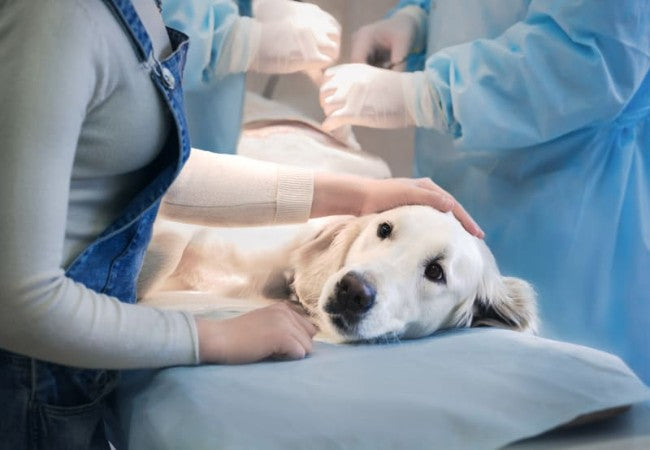Dog C‑Section Surgery in 2025: Vet‑Approved Guide to Procedure, Risks & Recovery 🩺🐶

In this article
Dog C‑Section Surgery in 2025: Vet‑Approved Guide to Procedure, Risks & Recovery 🩺🐶
By Dr. Duncan Houston BVSc
A cesarean section (C‑section) is a major surgery used to deliver puppies safely when vaginal birth fails or poses risks—commonly seen in brachycephalic breeds, dystocia, or fetal distress.
🩺 1. When a C‑Section Is Needed
- Dystocia: Prolonged labor (stage 1 lasting > 12 h or stage 2 pushing > 1 h without a pup).
- Brachycephalic or high‑risk breeds: Bulldogs, Frenchies, pugs often need help.
- Singleton pregnancy: One pup may not trigger labor hormones.
- Fetal/maternal distress: Detected by ultrasound, illness, or uterine inertia.
🛠️ 2. Pre‑Op Diagnostics
- Pregnancy day tracking (~63 days post-ovulation) helps with planned timing.
- Ultrasound and X-ray assess pup numbers, size, and position.
- Blood progesterone, core temperature drops signal labor readiness.
✂️ 3. Surgical Procedure
- General anesthesia + intubation; some vets use epidural blocks.
- Abdominal midline incision followed by uterine incision to remove puppies.
- Puppies are removed, dried, stimulated for breathing, cord is clamped by the support team.
- Uterine incision is closed, or spay is performed before abdominal closure if agreed.
✅ 4. Planned vs Emergency C‑Section
- Planned: Common in high-risk breeds or singleton pregnancies, reduces stress during birth.
- Emergency: Performed when labor stalls or fetal distress arises—life-saving for dam and pups.
⚠️ 5. Risks & Considerations
- Maternal survival ~99%; potential risks: bleeding, anesthesia reaction, infection, incisional breakdown.
- Puppy survival ~87% in emergencies—improved by prompt intervention.
- Concurrent spay doesn’t impair milk production because hormones support lactation.
- Limiting lifetime C-sections to 2–3 is advised for maternal health.
🏠 6. Post‑Op & Recovery (2 Weeks)
- Monitor anesthesia recovery for 4–6 h in-clinic before discharge.
- Offer small meals/water every 15–30 min for first 24 h; full nursing begins soon after.
- Mother needs 1.5× normal food intake initially; 2–3× by week 3 while nursing.
- Restrict activity—no jumping or rough play—to prevent wound complications.
- Daily check of incision for redness, swelling, drainage; use cone to prevent licking.
- Monitor nursing and maternal bonding; assist pups if mom is weak initially.
- Follow-up vet visit in 10–14 days to assess healing and remove sutures if non-absorbable.
📊 Quick Chart
| Aspect | Details |
|---|---|
| Timing | ~63 days or signs of stalled labor |
| Anesthesia | General (+/- epidural) with fluids |
| Procedure Time | ~45–60 min |
| Risks | Bleeding, infection, wound issues |
| Puppy Care | Immediate stimulation, warmth |
| Recovery | 2 weeks bed rest & nursing support |
| Spay Option | Can be done simultaneously |
🔍 Final Thoughts
Dog C‑sections are complex but often lifesaving procedures requiring careful planning, skilled coordination, and supportive aftercare. Whether planned for known risks or needed in an emergency, understanding each step from diagnostics to two-week recovery helps ensure safety, healthy puppies, and maternal well-being in 2025 and beyond. 🐾❤️
Need help planning or caring for your dog through a C‑section? Download the Ask A Vet app for personalized veterinary guidance anytime. 📱🐕






